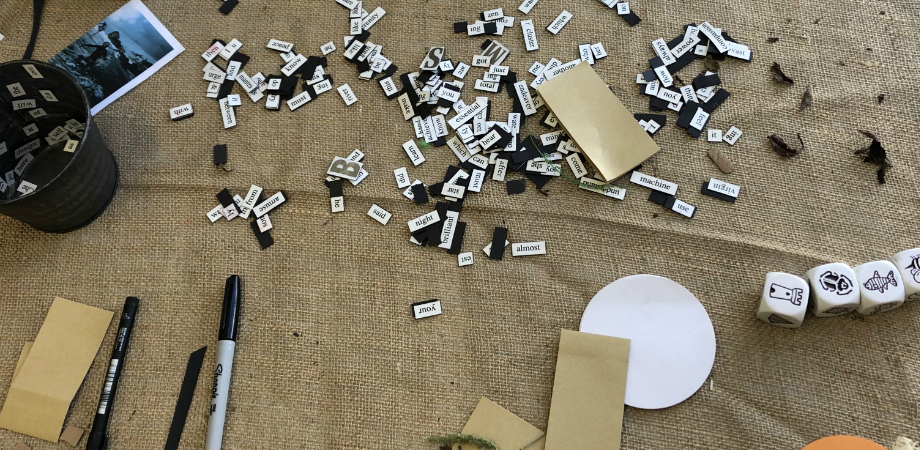Guest Blogger: Ciara Gallagher Creativity and Change programme participant – Blog No. 1

 Ciara has a PhD in English from Maynooth University. She has worked as researcher on the National Collection of Children’s Books (TCD) and “Gender Identity: Child Readers and Library Collections” at the Centre for Children’s Literature and Culture, DCU. She has taught English in various universities and currently works at Kids’ Own Publishing Partnership as office administrator.
Ciara has a PhD in English from Maynooth University. She has worked as researcher on the National Collection of Children’s Books (TCD) and “Gender Identity: Child Readers and Library Collections” at the Centre for Children’s Literature and Culture, DCU. She has taught English in various universities and currently works at Kids’ Own Publishing Partnership as office administrator.
First impressions of the Creativity and Change programme, (CIT) Cork – Blog 1
I’ve always had a keen interest in the creative arts and concepts of creativity. Issues of social justice have also always been to the forefront of my concerns, very much connected with my interest in creativity and literary forms, and informing much of my research. It’s not surprising then that the Creativity and Change course, a programme aimed at “anyone who is interested how creative engagement can nurture global citizenship and empathic action around local and global justice themes”, piqued my interest. However, having spent most of my career to date firmly on the analytical and critical side of creativity, and perhaps on issues of social justice too, it took some courage and the making of some pros and cons lists before I applied. Though I’ve invested much time in thinking about how literature can help us think about, see, and shape the world in different ways — in other words, how engaging with a form of creative expression might form new pathways of understanding — I haven’t spent much time on what is perhaps the more uncomfortable side of creativity.
From the very beginning of the course, I was struck by the emphasis on doing, on movement, on activity. Introductory ice-breakers were conducted by participants physically orienting ourselves at different points in the room according to different prompts. Each new topic was prefaced by games involving movement and reflection. Instead of beginning by talking about our interests and experiences related to global justice, we explored these ideas through working with watercolours, pencils, markers — objects unfamiliar to the adult me. We worked silently in groups on numerous activities. In one instance, groups of participants were given a block of clay, to shape and mould any way the group saw fit, without speaking or communicating. Working with paint and clay in silence allowed me to experience quiet contentment in the process, with “doing” for its own sake, rather than focusing on my lack of competence or confidence in these activities. I think I also reflected more deeply on ideas of teamwork and leadership as a result of these experiences than through many of the designated courses on these topics that I’d attended as part of training for previous jobs.
One full day of our first weekend was spent at the “creative fair”. Course participants were let loose in a room with numerous stalls with various familiar and unfamiliar art materials, books, newspapers, magazines and much more. For the first part of the day, we were given no instruction — only to enjoy, play, or create something from the materials at hand. After a couple of hours of being absorbed in activity, we were tasked with making something that somehow engaged with the United Nation’s Sustainable Development Goals, and were given some instruction on how to use the material at each stall. This, for me, and I think for many other participants, completely and perhaps deliberately changed the earlier atmosphere of experimentation and engagement. I attempted to make a postcard based on the fourth SDG, quality education. Though it’s an issue that I feel strongly about and have given thought to, attaching the logo for the SDG of quality education made the postcard feel like a flimsy exploration, expressing an easy platitude without depth or engagement. And so, the first weekend of the course ended with numerous reflections and realisations about the relationship between creativity and issues of global justice.